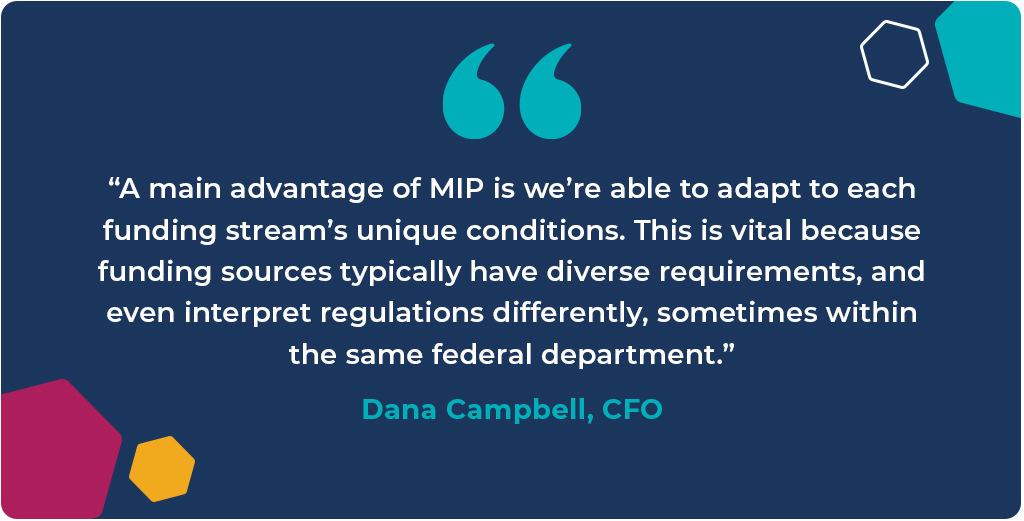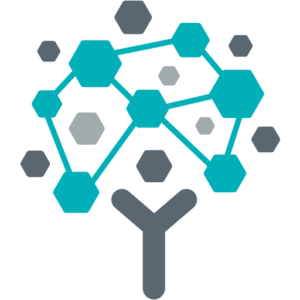Community Action Agencies
How Technology Can Improve Your Community Action Agencies’ Quality Framework

Reading Time: 4 minutes
Community action agencies and Native Nations can be fully funded by Community Services Block Grants, but the grants have unique reporting scenarios that finance teams must consider.
What are Community Services Block Grants (CSBGs)? According to the National Association for State Community Services Programs, the government created CSBGs in 1981 to provide funding to a specific service or program with a general goal of reducing poverty, revitalizing low-income communities, and empowering low-income families to become self-sufficient.
The grants are entirely federally funded but administered on a state level. Because state administrators oversee the grants, processes vary on a state-by-state level.
Agencies wishing to apply for funds must submit a community action plan. Requirements for the plans vary by state, and there is no universal template for a community action plan.
States can withdraw CSBG funding if an agency misuses funds or doesn’t use the funds for the stated goals in the application.
How is CSBG performance evaluated? States are responsible for analyzing the performance of CSBG grants. According to the National Association for State Community Services Programs, a state report typically includes:
- An accounting of the expenditure of funds
- Information on the number and characteristics of the people served
- A summary of the training and technical assistance offered by the state
States also conduct onsite reviews of agencies receiving CSBG funds. Another crucial way states evaluate performance is through Results-Oriented Management and Accountability (ROMA) reporting.
In 1998, the government amended the CSBG Act to establish ROMA standards.
What is ROMA? The CSBG Act defines ROMA as “a sound management practice that incorporates the use of outcomes or results into the administration, management, and operation of community action agencies.”
Community action agencies and Native Nations must report on ROMA measures and how CSBGs support family, community, agency, and sound management practices.
There are several methods available to finance teams to complete reports. ROMA requires specific reports to show that agencies correctly account for the CSBG requirements. Agencies need to track and report on beneficiaries served, resources provided to the community, and other similar metrics to demonstrate impact.
Traditionally, agencies have relied on systems like Microsoft Excel, basic bookkeeping software, or even manual methods, but these systems are prone to human error, create administrative hurdles to overcome, and aren’t sophisticated enough to handle the demands of running an organization.
How should agencies and Native Nations use grant reporting? Each grant has its requirements for qualifying and applying for funds. After receiving a grant, your accounting team must take several steps to stay compliant and ensure your organization can pass a grant audit.
For example, after receiving a federal grant, your organization should:
- Report how your organization allocated grant funds both quarterly and annually
- Have supporting documentation to show the use of funds
- Establish and maintain internal controls to show good fiscal stewardship
Concerning supporting documentation, your organization should track the following:
- Grant receipts
- Grant-paid invoices
- Bid quotes and records of procurements
- Time and attendance reports for employees
- Payroll expenses, including salary and fringe benefits
- Leases for equipment
- Contractual agreements
MIP Fund Accounting lets your organization quickly upload and store supporting documentation to ensure an auditor can easily access relevant documents. After uploading documents, agencies and Native Nations can quickly choose the correct format and generate grant forms from within the system.
How to improve reporting? Community action agencies and Native Nations can demonstrate programs are improving the lives of individuals, families, and the community through reports.
MIP Fund Accounting is designed for agencies and Native Nations to maximize efficiency and reporting. Adopting a system like MIP increases efficiency, allows for informed fiscal decision-making, and showcases programmatic impact.
With 340-plus report templates, MIP’s reports are granular and allow organizations to showcase relevant data and easily measure and track outcomes from social programs, like food baskets distributed, students in head-start programs and other similar stats.
MIP creates reports that can show your agency is making an all-around difference.
How can technology help? When it comes to ROMA reporting, the right combination of reporting and accounting software can help create an accurate and efficient reporting framework that meets ROMA and CSBG standards. If moving on from manual processes, consider
- Whether existing reporting structures and workflows easily identify ways to use programmatic resources to benefit your beneficiaries
- Evaluate the Reporting Metrics and Key Performance Indicators that are measured
- Whether existing reporting effectively tracks the required reporting metrics, KPIs, services, programs and activities accurately
- How easily the tracked data can be pulled into reports
- How often to run reporting, and whether it makes sense to automate vs. manually run reports
- Whether proper accounting and reporting software that demonstrates technical compliance is needed

Community action agencies and Native Nations have several demands. Choosing accounting and reporting software that will readily provide key accounting, reporting, and budget functionality can save time. Consider whether your current system can:
- Perform core accounting
- Grow as your organization grows
- Manage fixed assets
- Automate federal compliance reporting to keep your organization compliant
- Handle HR capabilities with the ability to log volunteer hours, and
- Embrace automated reporting to show program and service impact across funds, grants, services, projects or locations.
With compliance in mind, having the capabilities to quickly analyze multiple segments increases financial visibility into your organization’s performance, and ensures your organization is meeting grant requirements. Additionally, accounting software lets you drill down into your organization’s finances for increased analysis and high-quality report creation.
If your existing software and workflows don’t check all the boxes, or take too long, consider the benefits of MIP Fund Accounting software to meet the technical requirements of CSBG reporting or how it can be used as part of your ROMA framework to demonstrate your organization’s impact. Connect with us today to get started.
Additional resources:
- The Community Action Partnership of Illinois modernized its technology and realized the benefits immediately
- Community Action Agency of Butte County, Inc., upgraded from QuickBooks and began reporting for intricate finances
- Discover how other community action agencies and Native Nations are using MIP
- Explore how other nonprofits are using MIP to thrive
- How Community Services Organizations Can Account for Grants
- Improving Audit Prep Time by 50% and Freeing Up Time to Support South Carolina Communities
Share this post




